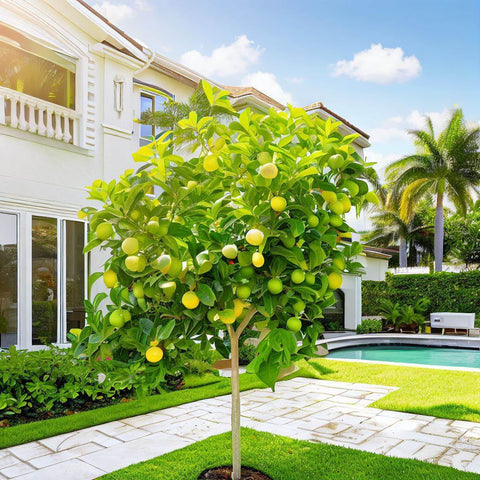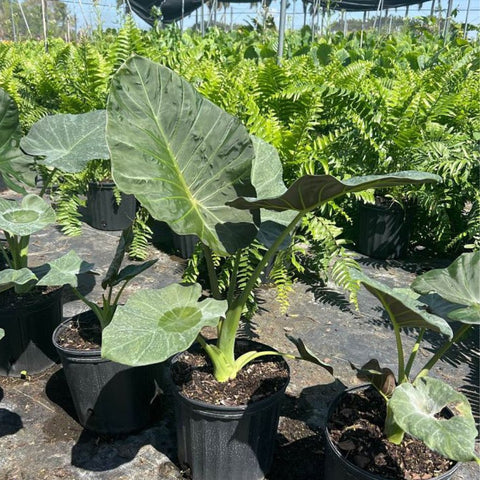Introduction
Magnolia trees are celebrated for their stunning blooms and lush foliage, making them a favorite among gardeners worldwide. As heralds of spring, their majestic flowers introduce the season with captivating beauty and elegance. This comprehensive guide will walk you through everything you need to know to plant and nurture magnolia trees in your garden this spring.
Understanding Magnolia Trees
Before diving into the planting process, it’s crucial to understand the different types of magnolia trees and their unique characteristics.

Types of Magnolia Trees
- Southern Magnolia (Magnolia grandiflora): Known for its large, fragrant white flowers, this variety is a classic choice in southern gardens.
- Star Magnolia (Magnolia stellata): Features star-shaped white or pink flowers that bloom in early spring, ideal for smaller gardens.
- Saucer Magnolia (Magnolia x soulangeana): Offers striking pink and white blooms that resemble saucers.
- Sweetbay Magnolia (Magnolia virginiana): Noted for its semi-evergreen leaves and fragrant flowers.
Characteristics and Benefits
Magnolia trees are not only admired for their beauty but also for their versatility. They can be used as ornamental trees, for creating shaded areas, or even as privacy screens. These trees are hardy and adaptable, making them suitable for various climates and regions.
Choosing the Right Magnolia for Your Garden
Selecting the appropriate magnolia tree depends on several factors, including climate, available space, and personal preference.
Climate Considerations
Magnolias are adaptable, but different types thrive in specific climates. Southern Magnolias excel in warm, humid environments, while Star Magnolias are better suited to cooler regions.
Space and Soil Requirements
Consider the mature size of the magnolia variety you choose to ensure it fits comfortably within your space. Magnolias prefer well-drained, slightly acidic soil. Testing your soil beforehand can help you make necessary amendments.

Purpose and Aesthetic Appeal
Decide the role you want the magnolia to play in your garden. Whether it's for shade, beauty, or privacy, magnolias can fulfill diverse functions.
Preparing for Planting
Proper preparation is key to the successful planting of magnolia trees. Begin by selecting your tree from a reputable source, such as Plantology, where you can trust the quality and care taken in cultivating your plants.
Purchasing Your Magnolia Tree
Invest in healthy, robust saplings from trusted suppliers. At Plantology, we offer a variety of magnolia trees ready to be planted in your dream garden. Browse our selection to find the perfect match for your landscape.
Site Selection and Soil Preparation
The location for your magnolia should offer ample sunlight and protection from strong winds. Prepare the soil by incorporating organic matter such as compost, which aids in drainage and adds nutrients.
Tools and Equipment
Gather essential gardening tools, including a shovel, watering can, mulch, and a gardening trowel, to facilitate the planting process.
Planting Magnolia Trees in Spring
Spring is the ideal time for planting magnolia trees due to the moderate temperatures and increased rainfall, which help establish strong roots.

Step-by-Step Planting Guide
- Digging the Hole: Create a hole twice as wide and as deep as the root ball of your magnolia.
- Positioning the Tree: Place the tree in the hole, ensuring that the top of the root ball is level with the soil surface.
- Backfilling and Watering: Refill the hole with the excavated soil, gently patting it down to eliminate air pockets. Water the tree thoroughly after planting.
- Applying Mulch: Spread a layer of mulch around the base of the tree to retain moisture and regulate soil temperature.
Initial Care and Maintenance
After planting, focus on consistent watering, especially during the first few weeks. It’s important not to overwater to prevent root rot.
Ongoing Care for Healthy Magnolia Trees
Once established, magnolias require minimal maintenance but still benefit from seasonal care routines.
Watering and Mulching
During dry spells, water thoroughly once a week. Maintain a layer of mulch to conserve moisture and suppress weeds.
Fertilizing Your Magnolias
Use a balanced, slow-release fertilizer in early spring. This can support new growth and enhance blooming.
Explore our range of plant care products at Plantology to keep your magnolias thriving. Visit our store for the best fertilizers and soil amendments.

Pest and Disease Management
Magnolias are generally resistant to pests, but occasional issues with aphids or leaf spots can occur. Inspect your trees regularly and address any problems promptly with organic pest control solutions.
Pruning Techniques
Prune magnolia trees in late winter or early spring to shape the tree and remove any dead or damaged branches. Minimal pruning is recommended to preserve their natural form.
Design Ideas for Magnolia-Enhanced Gardens
Integrate magnolias into your landscape for visual impact and aesthetic harmony.
Creating Focal Points
Position magnolias as central features in your garden to draw the eye and serve as conversation starters.
Complementary Plant Pairings
Pair magnolias with other spring-blooming plants like azaleas or rhododendrons for a layered effect. Consider integrating products from Plantology such as Agapanthus Lily of the Nile to add more color and texture around your magnolias.
Troubleshooting Common Issues
Despite their hardy nature, magnolia trees might face some challenges. Addressing these issues quickly helps maintain their beauty and health.

Yellowing Leaves
This can signal chlorosis, usually due to alkaline soils. Use soil amendments to adjust pH levels to a more acidic range.
Limited Flowering
If your magnolia isn't blooming as expected, ensure it is receiving enough sunlight and check for signs of over-fertilization or poor draining soil.
Root Problems
Ensure the soil around your magnolia isn’t compacted, which can suffocate roots. Aerate the soil if necessary.
Conclusion
Planting and nurturing magnolia trees can transform your garden into a haven of elegance and tranquility. By following this comprehensive guide, you’ll be well-equipped to grow healthy and vibrant magnolias that can be enjoyed for generations. Remember, quality starts with the right plant selection, so consider browsing through Plantology's extensive online catalog for premium magnolia trees and all your gardening needs.
Explore more about our products by visiting Plantology.
The Historical Significance of Magnolia Trees
Magnolia trees have a rich history that dates back millions of years, which speaks to their resilience and evolutionary success. Fossil records indicate that these ancient trees existed as far back as 95 million years ago, even before the emergence of bees. Magnolias evolved to promote pollination through beetles, a testament to their adaptive strategies for survival and reproduction.

Originally, magnolias are native to both Asia and the Americas. In China, the magnolia flower is a symbol of purity and nobility, often featured in art and poetry. On the other hand, the Southern Magnolia is emblematic of the American South, representing hospitality and grace. Understanding these cultural meanings can deepen your appreciation for the magnolias gracing your garden.
Advanced Planting Techniques and Tips
For experienced gardeners looking to refine their magnolia planting techniques, here are some advanced tips that can enhance your success rate:
Grafting Magnolia Trees
Grafting is a method used to propagate some magnolia varieties that don't grow well from seed. This involves joining two plant tissues together so they grow as a single plant. If you have a preferred magnolia variety but are struggling to grow it, consider learning grafting techniques or consulting with an arborist for professional grafting services.
Transplanting Magnolia Trees
Transplanting larger magnolias can be challenging due to their extensive root systems. Spring is the ideal time, but ensure you prepare by digging up as much of the root ball as possible, keeping roots moist throughout the process, and replanting promptly.
Mycorrhizal Fungi & Root Growth
Using mycorrhizal fungi can significantly enhance root growth and health. These symbiotic relationships aid in nutrient absorption, particularly phosphorus, crucial for robust growth and flowering. Incorporate mycorrhizal inoculants available from garden centers like Plantology into the soil at the time of planting.

Designing with Magnolias for Various Landscapes
When designing your garden or landscape with magnolias, consider their form, size, and color contrasts to create visually appealing compositions.
Urban Gardens
For urban landscapes, dwarf magnolia varieties such as 'Little Gem' or 'Kay Parris' can provide the same lush beauty without overwhelming the space. These work well in courtyards or as statement pieces in smaller yards.
Country Estates
In expansive gardens, consider planting a range of magnolia species to create a staggered bloom effect. Utilize both evergreen and deciduous varieties for year-round interest. Southern Magnolias, with their impressive height and lush canopy, serve as majestic focal points.
Water Features and Reflective Spaces
Planting magnolias near water features can enhance their aesthetic appeal. The reflective water surface accentuates their beauty, especially during flowering. Ensure proper drainage and spacing to protect roots from excess moisture damage.
Color-Themed Garden Sections
Create themed sections based on bloom colors. Pair white-flowered Star Magnolias with similarly hued flowers like white tulips or daffodils for a serene monochromatic garden. Alternatively, mix with contrasting blooms for a vibrant spring display.

Environmentally Friendly Practices in Magnolia Care
Practicing sustainable gardening ensures that your magnolia trees and entire landscape thrive without harming the environment.
Organic Pest Management
Utilize neem oil or insecticidal soaps for treating pests like aphids or scales on magnolias. Additionally, introduce beneficial insects such as ladybugs, which feed on aphids, contributing to a balanced ecosystem.
Rainwater Harvesting for Irrigation
Implementing rainwater harvesting systems for irrigating your magnolias reduces reliance on municipal water, particularly important in areas prone to drought. This practice also minimizes runoff and conserves environmental resources.
Composting and Soil Health
Enhance soil health by adding homemade compost, which improves structure and nutrient content. Composting garden waste reduces landfill impact and promotes a circular approach to gardening.
The Future of Magnolia Cultivation
As climate change reshapes global landscapes, the cultivation and distribution of magnolia trees are being reconsidered. Research and breeding programs focus on developing varieties resilient to new climate challenges, such as increased temperature and variable precipitation patterns.

Climatic Adaptation
Selecting magnolia species adapted to your future climate can ensure long-term survival. Studies are exploring drought-resistant cultivars and those that can withstand higher temperatures, ensuring magnolias remain as stunning and versatile as ever.
Conservation Efforts
Efforts to conserve wild magnolia species and their habitats are critical, as these trees play a vital role in their native ecosystems. By supporting conservation programs and nurseries that prioritize sustainable practices, gardeners contribute to safeguarding magnolia biodiversity.
Resources and Further Learning
If you're eager to expand your knowledge on magnolia trees and other aspects of horticulture, various resources can provide valuable insights and information:
Books and Publications
- The Tree Book: Superior Selections for Landscapes, Streetscapes, and Gardens by Michael A. Dirr
- Dirr’s Encyclopedia of Trees and Shrubs provides comprehensive information on tree and shrub species, including magnolias.
- Magnolias: A Gardener's Guide by Jim Gardiner explores the species in depth with practical gardening tips.

Online Courses and Workshops
Participate in gardening workshops hosted by botanical gardens or online platforms that offer courses on tree planting, care, and landscape design. Websites like Plantology frequently update their offers with educational content and resources.
Join Gardening Communities
Engaging with community gardening groups or online forums dedicated to horticulture enables you to exchange experiences, gather advice, and stay updated with trends in magnolia care. Platforms such as Reddit's /r/gardening or the Garden Answer community are great for exchanging ideas.
Conclusion and Call to Action
Magnolia trees are not just a magnificent addition to any garden; they are a legacy to be nurtured and enjoyed over generations. With their timeless beauty and robust nature, they offer a rewarding gardening experience. From selecting the perfect species to mastering advanced care techniques, your journey with magnolias can be as expansive as it is fulfilling.

Take your magnolia gardening ambition further by visiting Plantology for a wide selection of plants and gardening supplies. Keep your magnolias thriving and your garden vibrant by choosing quality products and remaining informed through continuous learning. Visit Plantology to start or expand your botanical journey today!






























Comments (0)
There are no comments for this article. Be the first one to leave a message!